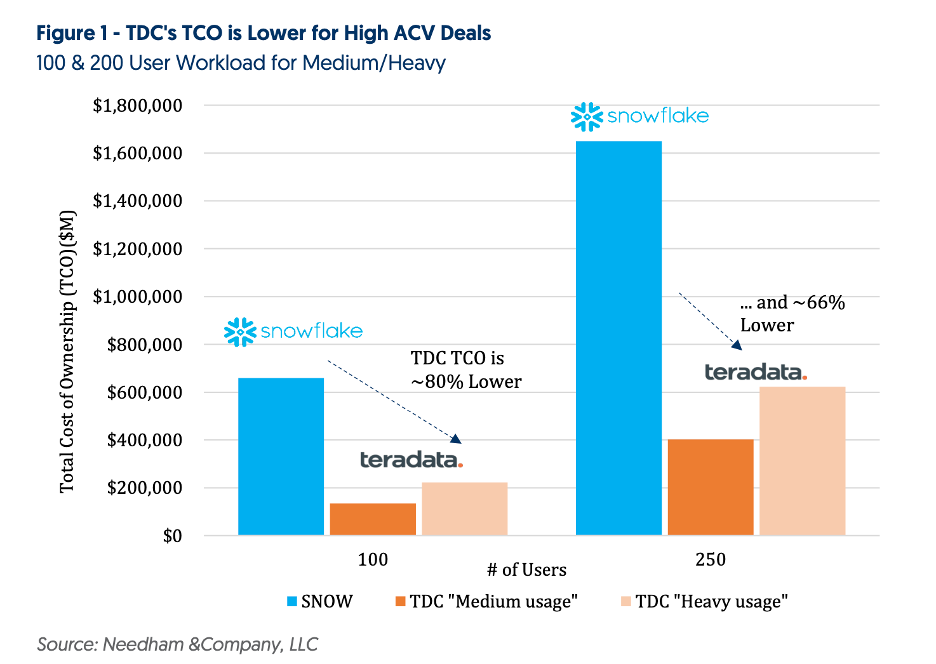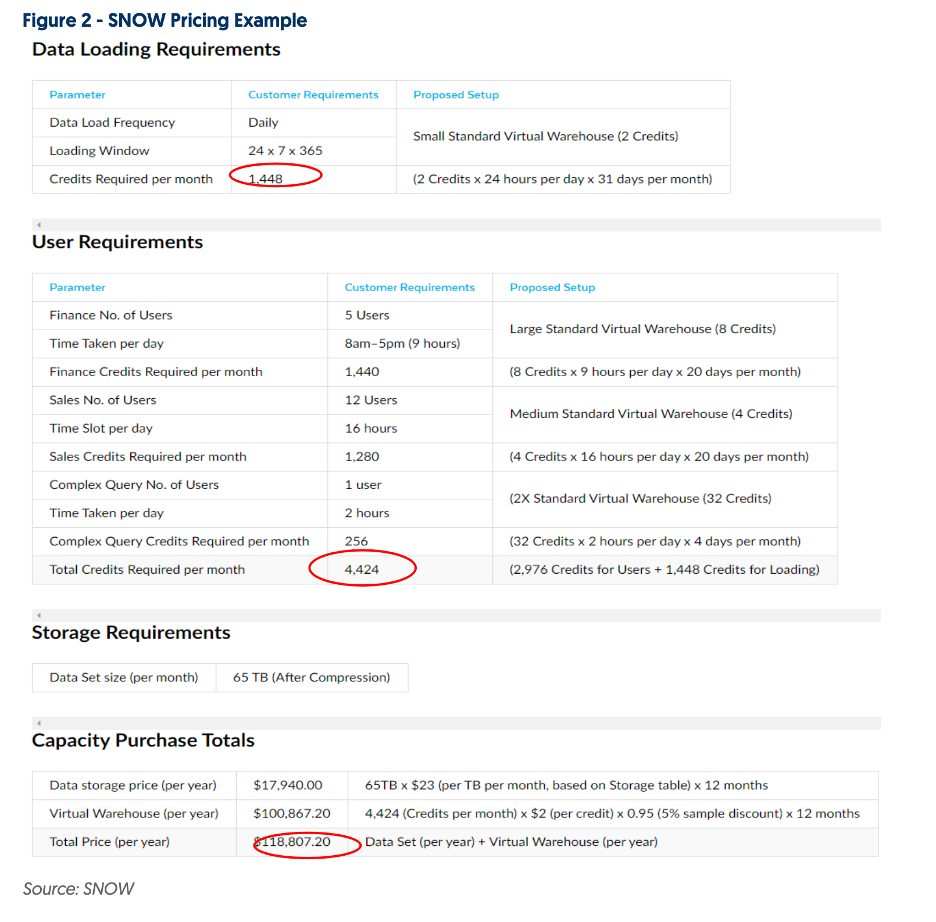Teradata's value proposition
Teradata provides a value proposition unmatched in the market related to workload management and enterprise price performance (EPP). If organizations take advantage of the data they have and use it, Teradata’s value proposition is obvious. Saying this as a data and analytics cloud platform provider is one thing but being validated by outside sources prove the value-add Teradata provides to customers. Organizations rely on building a strong data and analytics platform, irrespective of where data is stored and how solutions are deployed. Ensuring strong and tangible business outcomes requires this level of flexibility. Being able to validate Teradata’s low TCO against the market is important when making longer-term decisions about technology investments. Needham, an investment bank and asset management firm specializing in advisory services for growth companies, conducted a cost evaluation and concluded that, “TDC’s competitive position reveals that the company actually has a lower TCO versus other cloud-native DWs for high compute, enterprise- grade workloads, so we believe TDC has a differentiated value proposition.”
Needham's evolution of Teradata against Snowflake
Needham’s evaluation of Teradata highlights the cost advantage for high compute workloads, using an evaluation against Snowflake for comparison and highlighting a variety of industry sources to support their conclusion. Although not comprehensive in defining all the variables required for an in-depth cost comparison, Needham identifies the key aspects organizations should consider when evaluating cost and choosing options that provide high value coupled with lower TCO. Needham’s overall analysis states that “TDC has a cost advantage for high compute workloads with a large ACV (all commodity volume).” Their analysis compares Teradata Vantage workloads against Snowflake by looking at medium and heavy workloads for 100 and 250 users, respectively. To evaluate this type of competitive pricing dynamics for TDC, Needham found that “cloud DW workloads on TDC become economically advantaged around the >$130,000 ACV mark and these advantages continue for deals >$1 million.”
Needham provides a general analysis, and references BEZNext’s benchmark that compared scale-out data warehouses, whereby Teradata ends up costing customers the least in terms of price/performance, with $2.9 million in annual cost compared to SNOW at $10 million and AWS at $15 million. Both evaluations are based on cost and show Teradata as a leader in low-cost data analytics platform options.
Needham’s overall evaluation of Teradata highlights our continued value proposition supporting broader consumption and use across the organization. Figure 1 shows Needham’s cost comparison based on number of users and workload, among other factors:

Needham developed their cost calculation by multiplying the number of users in the Snowflake example (found on their website). For example, 100 users = 18 users x 5.6 in the Snowflake example, and for 250 users, 18 users are multiplied by approximately 12.6 to come to the $1.651M (refer to Needham Figure 2). Teradata’s pricing calculator provides Needham’s rationale for Figure 1 pricing outcomes. Needham also acknowledges that:
“TDC offers two flexible pricing options based on a blended or consumption-based approach. Blended pricing combines reserved compute capacity (i.e., an AWS machine with 96 vCores) and consumed compute for on-demand elasticity (See Appendix: Figure 9). Meanwhile, consumption-based pricing provides automatic elasticity in which users pay only for resources consumed (i.e., compute for queries plus storage). Although this option is comparable to SNOW, users are not required to size their systems based on their workload requirements (i.e., less resource-intensive workloads are not right-sized to a DW size)."
Teradata enables enterprises to scale at a lower cost
Although, it might be challenging to create a one-size-fits-all model for data and analytics platform pricing, organizations need to look at their ability to scale and select a solution that will grow with their organization’s needs. Based on Needham and BEZNext, it becomes obvious that Teradata’s value for price enables organizations to scale at a lower cost. The ability to scale also includes factors such as workload management and user adoption, without having to double or triple their costs or platform size to do so. Organizations should evaluate costs, benefits, and desired short and longer-term business and data outcomes when leveraging external sources to validate their platform choices. Needham’s market valuation, coupled with other industry evaluations, highlight Teradata’s price and performance benefits when compared to other market options.
For Reference:


